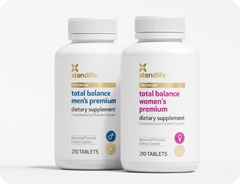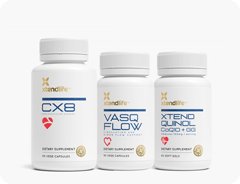The findings of the study were published in the British Journal of Nutrition, showing that after exercise, obese and overweight people had blood pressure levels that were 14% lower after they drank a beverage containing high amounts of cocoa flavanols (701mgs), compared to a group which drank a low flavanol drink (only 22mgs).
The high flavanol group also experienced a 6.1% increase in flow-mediated dilation…which is basically a measure of a blood vessel’s ability to relax.
I only have two issues with this study. Firstly, there is no mention of the beverage’s nutritional ingredients or contents. What was the protein, carbohydrate, and fat percentages? What else was in the beverage besides cocoa flavanols?
My other concern is that the researchers used the BMI (body mass index) to determine which subjects were overweight and which were obese. The BMI has many flaws and I wonder why the researchers didn’t use more accurate methods to measure the subjects.
Anyway, with regards to study in general, I’m sure this doesn’t mean you can scoff loads of chocolates and expect to exercise with ease. Please use common sense before starting any exercise regime. Start off slowly and move at your own comfortable pace, before building up and increasing your speed and resistance over time.


 Supplements
Supplements Skincare
Skincare Superfoods
Superfoods Bundles
Bundles














Hi Stefanie
Thanks for mentioning that chocolate milk study…I remember reading about it a few years ago. You’re right, it was supported by the Dairy and Nutrition Council which immediately puts a big exclamation mark over the results.
It still baffles me why milk is consumed in such high quantities, considering that between 60% and 70% of the world’s adult population cannot effectively metabolize lactose. It’s hardly surprising that the production of lactase falls dramatically after the weaning-period in humans, suggesting that adults shouldn’t really be drinking high quantities of milk. According to the study "To meet the current recommendations for post-exercise carbohydrate intake (19, 24), a 70-kg male and a 60-kg female would need to consume 17 to 27 and 14.5 to 23 fluid ounces, respectively, of low-fat chocolate milk, depending on the brand." That’s a lot of milk!
At Xtend-Life, we encourage people to try and limit their daily intake of milk…preferably none at all. Although we understand that adding a little bit of milk to a hot beverage is enjoyed by some people.
From a physiological perspective, I personally cannot see the benefits of consuming milk (chocolate, low-fat or otherwise) to aid post-exercise recovery. Unless I’m very much mistaken, professional (or even weekend) athletes don’t look for the nearest milk carton once they’ve finished their exercise.
We’ll probably never know why both studies left gaping holes in their data…leaving more questions than conclusions. Thanks again for your comment Stefanie, I’m looking forward to hearing what other people have to say about this.
Xtend-Life Expert April 14 2010